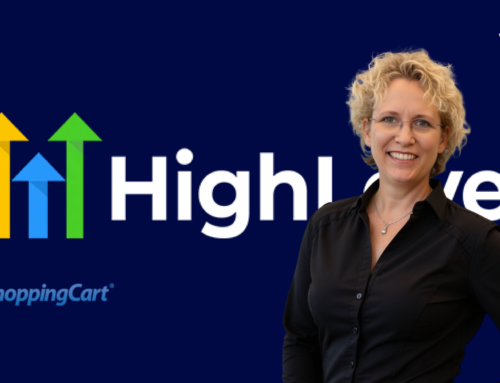
What is Premium Graphic Design?
In a digital world where aesthetics and functionality go hand-in-hand, the importance of Premium Graphic Design for Websites is a central theme for businesses, designers, and users alike. But what does this term mean, and how can it elevate a brand’s presence online?
This comprehensive guide will illuminate these questions and cover everything you need.
Key Components of Premium Graphic Design
Typography: The Language of Design
Typography encompasses more than just the written word. It’s an art that designers use to speak to their audience. It shapes brand identity and reflects the creative market’s current trends.
Role in Graphic Design: The different categories of fonts and the way they are used can tremendously impact the overall design. They are powerful design tools that designers and web developers must master.
Key Elements:
- Font type
- Line spacing
- Letter spacing
Fonts and Graphics: Utilizing high-quality images, graphics, and various text effects, such as Photoshop brushes and plugins, helps enhance typography further.
Many graphic designers choose fonts that are not website safe. They use unique fonts that require the specific font gets uploaded onto the website before it will display. That means the font needs to be downloaded before the website will display correctly for every viewer. This is not user-friendly, and it will slow your website down.
For better website results, be sure your graphic designer chooses from one of the web-safe Google fonts.

Color Theory: Painting the Web with Emotions
Color Theory goes beyond the visual; it expresses creativity, reflecting moods and emotions.
Role in Graphic Design: Properly understanding color patterns and using color tools, like Adobe’s Creative Cloud, helps design websites that look good and feel right.
Key Elements:
- Color wheel
- Color Harmony
- Color Context
Premium Graphic Designs: The choice of premium graphics, the application of premium pricing for high-quality work, and a well-curated extensive library of graphic elements can elevate a simple design to a professional level.
One of my favorite online tools for creating color palettes is Paletton. You can enter your primary color, then select how many colors you need, and the program will tell you some great options to go with the primary color. See the image below.

Layout and Page Layout: The Blueprint of Creativity
Effective layout design is a meticulous process involving both art and science.
Role in Graphic Design: A well-designed layout enables users to navigate pages quickly and engages them with the content. The layouts must be responsive, and the process often involves graphic designers’ web tools to achieve the desired functionality.
Key Elements:
- Grids
- Alignment
- Balance
Incorporating Multimedia: Including stock video, stock photography, and sound effects can enrich the experience. Features like scheduling can be integrated into the design to enhance user interaction. With the advent of image AI, your “stock” images can now become uniquely yours.
Imagery: The Art of Visual Storytelling
Images do more than decorate; they communicate complex ideas effectively.
Role in Graphic Design: Using high-quality images and image optimization techniques helps convey messages with impact.
Key Elements:
- Quality
- Relevance
- Composition
Images and graphics can be used in premium website design as backgrounds, design elements, and main focal points. The use of gradients makes subtle visual enhancements. Sometimes it is a simple visual aspect that turns a blah design into a premium design.
Branding: Building a Digital Identity
Branding isn’t just about logos. It’s about creating a consistent and compelling brand identity online.
Role in Graphic Design: From logo design to a comprehensive branding guide, designers build an identity that resonates with customers.
Key Elements:
- Branding agency collaboration
- Color Scheme
- Voice & Tone
Benefits of Premium Graphic Design for Websites
- Enhances user experience
- Improves brand image
- Increases user engagement
- Improves SEO through premium quality design and website optimization
Tools and Resources: The Designer’s Treasure Chest
- Adobe Creative Cloud: The Magic Wand of Design
- Adobe Photoshop: Edit images, create mockups icons, and unleash creativity with Photoshop actions and brushes.
- Adobe Illustrator: A haven for vector art, illustrations, and logo designs.
For those of you who do not want to invest the time to learn Adobe products, a great alternative is Canva. It is easier to learn, cheaper and can create quality graphics and videos for websites.
The Design Software Galore
From Sketch and Figma to tools for creating premium graphic templates, the choice of design software shapes a designer’s life.
Whether you’re a freelancer or part of an advertising agency, these tools offer unlimited downloads of design assets and inspiration from platforms like Envato Market.
Stock Imagery and Icons
Websites like Unsplash provide stock photos and high-quality images for projects, while Graphic Burger and other platforms offer icons and graphic elements that can be customized.
If you want the convenience of stock imagery without the look of stock, try image AI tools. Both MidJourney and Leonardo are great choices to start learning.
A Deep Dive into Design Blogs and Learning Resources
Design Blogs and eBooks: Continuous Learning
Design blogs and eBooks are treasure troves of design tips, tutorials, and inspiration. Websites like Envato Tuts+ offer many courses ranging from beginner to advanced levels. Design cuts, insights from professional designers, and tutorials on design tools are all available to aid the learning journey.
Web Design Tools and Software
From design website tools like WordPress to specialized graphic design software like Sketch, the technology available to today’s designers is robust and varied.
Tools like logo maker software and mockup generator can speed up the design process, and premium graphic design resources are available for a small fee or even for free trial versions.
Visualization and Presentation
Effective visualization requires designers to consider not only aesthetics but also the way information is presented.
Presentation templates, product mockups, UI kits, and even Google slides are crucial in this design aspect. They enable designers to present their work professionally, showcasing their skills and ability to meet clients’ needs.
User Experience (UX) Design: Crafting Superior Interactions
The Intersection of Creativity and Functionality
Understanding the user is the heart and soul of premium website graphic design. Whether a freelancer or an advertising agency, you aim to create an intuitive and delightful user experience.
Role in Graphic Design: UX design isn’t just about layouts, graphics, empathy, and understanding. Designers must balance creative market demands with user needs.
Key Elements:
- Navigation: Easily find what you’re looking for with well-designed menus and links.
- Interface Design: From using Adobe Photoshop to sketch plugins, tools matter in crafting a seamless interface.
- Accessibility: Design for all users, including those with disabilities, through thoughtful design and inclusive practices.
SEO & Premium Design: A Symbiotic Relationship
Enhancing Visibility Through Design
SEO isn’t just about keywords and links; it’s about quality. Premium graphic design for websites is pivotal in enhancing a site’s visibility.
Role in Graphic Design: Utilize high-quality images, optimized layouts, and well-designed templates to boost search rankings.
Key Elements:
- Image Optimization: Edit images using tools like Adobe Creative Cloud for faster loading.
- Mobile-responsive Design: Ensure the website looks perfect on all devices.
- Content Structure: Engage users with creative blog content, engaging graphics, and a seamless user flow.
The Power of Branding: More Than a Logo
Building a Timeless Brand Identity
In the bustling bazaar of the web, branding is your beacon. It’s not just about logos crafted with Adobe Illustrator, or striking designs conjured through Envato Market. It’s about creating a brand identity that resonates.
Role in Graphic Design: Collaborate with clients, apply branding guides, and customize the design to mirror the brand’s essence.
Key Elements:
- Consistency: Logos, color schemes, and typography must align across all platforms.
- Emotional Connection: Create designs that speak to the customer’s heart.
- Brand Guidelines: Work closely with branding agencies to ensure a unified vision.
AI & Visualization: The Future Frontiers
Embracing New Technologies
Premium graphic design for websites is ever-evolving. With the advent of AI and sophisticated visualization tools, designers can now create experiences that were once the stuff of science fiction.
Role in Graphic Design: Adapt to new tools and techniques for designing futuristic web elements.
Key Elements:
- AI: Leverage AI-powered design tools for efficiency.
- 3D Graphics & Visualization: Employ advanced design software to create immersive experiences.
- Future-proof Design: Stay ahead of trends through continuous learning, courses, or design blogs.
By weaving together various elements, from design tips to sophisticated design software, the world of premium graphic design for websites paints a vivid tapestry. It’s a dance between art and technology, creativity and logic, dreams and pixels.
The Ultimate Branding Recipe: A Consultant’s Guide
Branding isn’t about logos alone; it’s about creating personal connections through a visual narrative.
- Understanding the Business: This starts with understanding different categories within the target market and aligning them with the brand.
- Collaborating with Clients: Creating a branding strategy requires open communication, understanding their needs, and creatively addressing them through logo template designs and branding guidelines.
- Designing a Homepage that Resonates: Utilizing premium websites and graphics, including customized layouts and high-quality images, helps deliver a cohesive and compelling web experience.
Designing the Future, One Pixel at a Time
The world of Premium Graphic Design for Websites is a melting pot of creativity, technology, and art. The journey takes a simple design project from scratch to a full-fledged virtual presence.
From crafting logos with Adobe Illustrator to designing with a keen eye for color and layout, this field is a never-ending canvas.
FAQs
What are some free design resources?
Many platforms offer free fonts, templates, and more. Examples include Google Fonts, free sections on Envato Elements, and Graphic Design Resources.
How do I start my graphic design projects?
Start with a clear understanding of your client’s brand and goals. Utilize premium design resources, create a mood board for inspiration, and sketch ideas before jumping into design software like Adobe Photoshop.
Can I find pre-made templates for quick design projects?
Absolutely! Sites like Envato Market offer pre-made templates that can save time and still provide a premium design look.
How do designer communities impact Premium Graphic Design for Websites?
Designer communities play a pivotal role in Premium Graphic Design for Websites. Through networking, sharing resources, and collaboration, designers can exchange creative ideas, stay abreast of the latest design trends, and collectively work on projects. These communities foster a sense of unity and innovation, often leading to the creation of new design techniques and tools that enhance the overall quality of web design.
What are the key responsibilities of a designer in Premium Graphic Design for Websites?
A designer’s job in Premium Graphic Design for Websites entails various responsibilities. This includes understanding client needs, conceptualizing visually appealing layouts, utilizing appropriate typography and color schemes, creating customized themes, and ensuring the design is user-friendly and optimized for different devices. Continuous learning and staying updated with the latest design tools and software are also integral to fulfilling these responsibilities.
How does the graphic design of websites contribute to overall web development?
The graphic design aspect of websites is fundamental in creating a cohesive and engaging online presence. It goes beyond aesthetics, focusing on user experience, navigation, and branding. A well-designed website captures the brand’s identity, facilitates smooth user interactions, and effectively communicates information, thus vital in attracting and retaining visitors.
What role do Photoshop plugins play in Premium Graphic Design for Websites?
Photoshop plugins are invaluable in Premium Graphic Design for Websites. They enhance the capabilities of Adobe Photoshop, allowing designers to efficiently perform complex tasks such as image editing, text effects, and 3D transformations. By automating repetitive actions and offering specialized features, these plugins save time and enable designers to achieve high precision and creativity.
How are customized themes important in Premium Graphic Design for Websites?
Customized themes are essential in creating unique and tailored website experiences. Unlike pre-made templates, customized themes allow designers to create a web design that aligns perfectly with a brand’s identity and objectives. They provide greater control over layouts, color schemes, and functionalities, ensuring the website stands out from generic designs and resonates with the target audience.
Why is Premium Graphic Design for Websites considered a time-consuming process?
Premium Graphic Design for Websites is often seen as time-consuming due to the intricate and multifaceted nature of the design process. It involves careful planning, detailed research, conceptualization, design iteration, and rigorous testing. Every element, from typography to imagery, must be meticulously crafted to align with the brand’s vision and user expectations. The investment of time ensures that the final product is aesthetically pleasing, functional, and effective in achieving its purpose.



